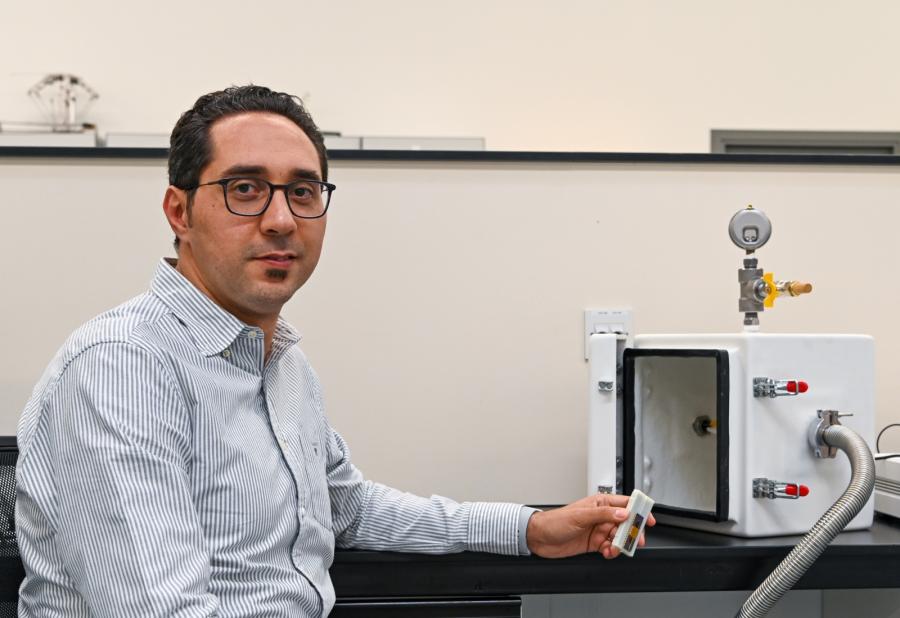- About
- Admissions
- Study at AUS
- Prospective Students
- Bachelor's Degrees
- Master's Degrees
- Doctoral Degrees
- Admission Publications
- International Students
- Contact Admissions
- Grants and Scholarships
- Sponsorship Liaison Services
- Testing Center
- New Undergraduate Student Guide
- Undergraduate Orientation
- New Graduate Student Guide
- Graduate Orientation
- File Completion
- Payment Guide
- Students with Disabilities
- Executive and Continuing Education
- Academics
- Life at AUS
- Research
- Publications
- Contact Us
- Apply Now
- .

AUS faculty member researches revolutionary MEMS sensors
Research led by Dr. Mehdi Ghommem, Associate Professor in Mechanical Engineering at American University of Sharjah (AUS), on the use of micro-electro-mechanical systems (MEMS) in mass sensing applications has been recently published in the renowned Journal of Applied Physics and distinguished as the Editor’s Pick.
In his research, Dr. Ghommem explores the design and production of miniaturized mass sensors to detect the presence of tiny masses in the order of a few picograms and then converting that information into a resolvable signal via a transduction technique. Such devices can be used to detect toxic gas leaks in confined working environments or to detect and characterize biological elements such as cells, viruses and DNA molecules as required in medical diagnostics.
Funded by the AUS Faculty Research Grant, the research is conducted in collaboration with researchers from FEMTO-ST Institute, France led by Dr. Najib Kacem and Dr. Vincent Walter, and Dr. Fehmi Najar from Tunisia Polytechnic School, Tunisia.
“We used the team members' various areas of expertise to explore different mass detection mechanisms using electrostatic coupled MEMS resonators to serve as a baseline for the development of novel MEMS mass sensors with superior performance in comparison to their conventional counterparts,” said Dr. Ghommem.
He added: “The researchers conducted a comprehensive analysis that includes numerical and experimental studies on a MEMS device made of mechanically coupled microbeams under electrostatic actuation. The MEMS device was created using a well-established microfabrication process, called MUMPS by MEMSCAP (one of the major MEMS foundries). The advanced research equipment at FEMTO-ST Institute, France was of vital importance for the experimental component of the project. A setup comprising a vacuum chamber, a Doppler laser vibrometer from Polytec, an electrometer and a Picoscope 5444B were deployed to characterize the MEMS device and investigate its sensitivity to added mass. A multi-physics analytical model was also developed and validated against experiments. The model allowed us to understand interesting dynamic features of coupled MEMS resonators that can be exploited for mass sensing applications.”
AUS faculty members are active researchers across a variety of disciplines. Students also have an opportunity to work alongside faculty on various research projects. For more information on how their work is making an impact, visit www.aus.edu/research.
To have access to the paper, click here.

